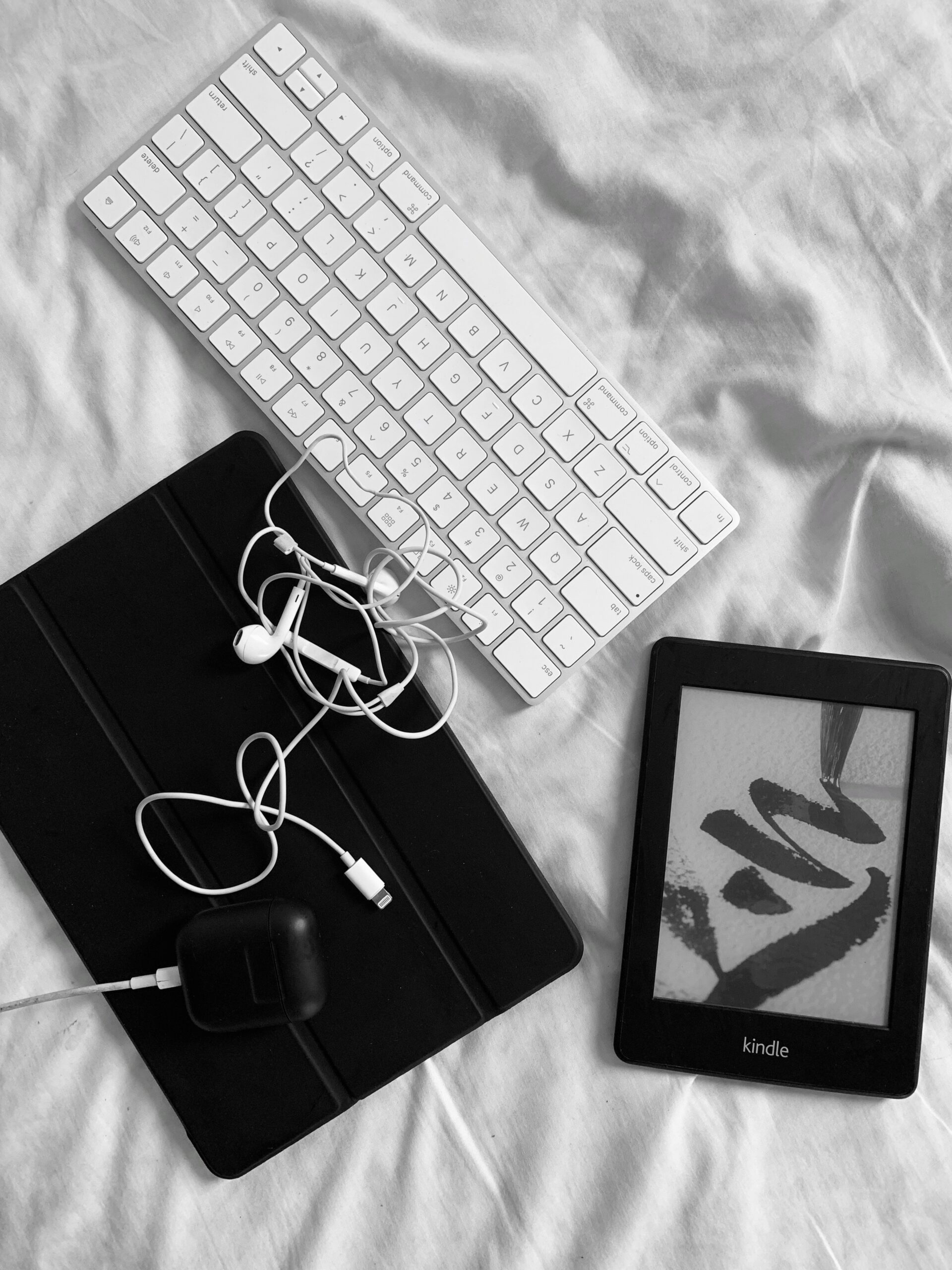As a fine arts student at Portland State University, a good majority of my assignments are often readings. Recently, I’ve grown attached to reading these materials on my iPad using the Kindle app. Who knew any PDF can be uploaded to the Kindle app for easy reading.
After expressing my excitement surrounding this discovery, as well as how helpful it’s been in managing my school readings, a family member kindly gifted me a Kindle. How sweet! However, I realized how similar the reading experiences were while comparing the two. If it wasn’t a gift, would the e-reader experience be worth the cost or does a tablet with the free Kindle app do the job just as well?
The two specific devices I’ll be comparing are the iPad Pro (11-inch) (second generation) and the Kindle Paperwhite (6.8-inch) (eleventh generation).
One of the most glaring differences is size. My iPad is a full 4.2 inches larger than the Kindle, which means the hold of the tablet is a bit clunkier during reading than the Kindle’s lighter, smaller design. While Apple’s iPad Mini might be a better match in size—with the smallest Mini only 7.9 inches—my iPad Pro was bought for taking notes in school. The iPad’s larger screen can easily provide a two-page reading experience or more words per page with larger text sizes. The Kindle’s smaller size means turning the page more often, which I’ve noticed can be a bit annoying over long periods.
I’ve noticed difficulties in hold with both tablets, though. I often lean the iPad against my legs in order to sit comfortably while reading. The Kindle’s lighter and smaller design seems to improve this experience, but it can also be a pain to hold. After reading for a while, my hand begins to cramp or the finger it rests on will tire. According to my friends who are Kindle fans, a case with a strap to slide your fingers through is a must in order to read comfortably. In fact, a case seems to be a must in general; the Kindle feels so light and delicate that I fear one drop will shatter the screen. This would, of course, add to the price.
Speaking of prices, let’s compare. The iPad Mini (7.9-inch) (fifth generation) (64GB), the closest in size to the Kindle, can be bought for $234.99 used on Amazon. The Kindle Paperwhite (6.8-inch) (eleventh generation) (16GB) is currently sold for $149.99 on Amazon. If the goal is only to read, the Kindle is the cheaper option.
One of the Kindle Paperwhite’s key features is its black-and-white screen which is easier on the eyes. The screen’s gentle light does prove less tiring on my eyes when compared to the blue light of the iPad. The Kindle’s warm-toned screen is likely the closest to traditional paper. Though, I can’t ignore the Kindle app’s robust customization experience on the iPad. Even though it’s still blue light, the app can look pretty similar to the kindle.
Lastly, the Kindle is at times unbearably slow. A huge perk in favor of the iPad is its processing power, so navigation of the app alone is a million times more pleasant than attempting to use the Kindle’s menu or store. I imagine this is because the Kindle is optimized for reading, not shopping for books, though its slower processing might also contribute to the impressively long-lasting battery life. If you want to browse titles with ease and in color, the Kindle app on the iPad will be much more pleasant.
Nothing beats holding a paper- or hardback book in your hand, but when it comes to e-books there are so many pros and cons. In my opinion, if you just want to read e-books with comfort and ease, get the Kindle with a nice case. If you want a smoother experience and more options for a bit more money upfront, the iPad is the way to go. Either way, happy reading and don’t forget to give your eyes a break.
Blog written by Isabel Zerr.

